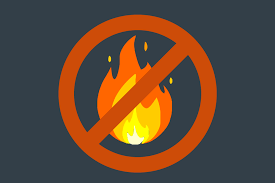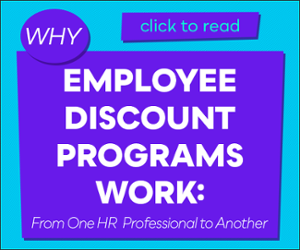In our last article, Employee Burnout is Everyone’s Problem: 5 Workplace Dangers to Correct we went into depth about the warning signs of burnout and the unhealthy work situation that can contribute to it. If you need a refresher, you can go back and read it here. Or, here’s a quick recap:
Burnout is the result of chronic stress, and it manifests as exhaustion, cynicism and reduced productivity. Employees are more likely to burn out when they are overworked, surrounded by toxic behaviors, micromanaged, bored or treated unfairly. Think managing burnout is not your job? Think again.
Check out these recent statistics surrounding burnout:
- Globally, 42% of the workforce are reporting burnout, a 2% point rise from the previous quarter and an all-time high since May 2021.
- Employees reporting symptoms of burnout are also 6x as likely to report intent to leave their employer in 3-6 months.
- The number of Google searches for “symptoms for burnout” is up 500% in recent years.
- 39% of HR professionals are experiencing burnout.
- 46% of C-suite, compared to 39% directors, 37% of managers, 36% of individual contributors reported symptoms of burnout.
- Over 4 million workers quit their jobs each month in 2022.
These statistics and other evidence are showing that burnout is not a “transitory” problem that will resolve on its own along with the pandemic. You can see how well the watch-and-wait strategy worked for those who thought inflation was transitory. It’s time for employers to implement positive workplace strategies to reduce unnecessary stress and prevent or treat employee burnout.
Burnout Prevention vs. Burnout Recovery
 As Benjamin Franklin famously said, “an ounce of prevention is worth a pound of cure.” He was talking about preventing fires in the city of Philadelphia, and I think we can all agree that preventing a fire is much easier than fighting one, or repairing the damage one causes.
As Benjamin Franklin famously said, “an ounce of prevention is worth a pound of cure.” He was talking about preventing fires in the city of Philadelphia, and I think we can all agree that preventing a fire is much easier than fighting one, or repairing the damage one causes.
Burnout is much the same. Even the name, burnout, invokes the same imagery as a city hollowed out by flames. Prevention has been found to be exponentially easier than recovery.
The path to burnout is often long, with months or years of chronic stress finally reaching a tipping point. It’s going to take more than a day or two off to fully recover. In fact, the path to recovery requires months or years of actively practicing coping skills and ridding one’s life of stressors.
Employees who burned out because of workplace stress might not find recovery possible unless they find a less chaotic employer. Statistics are showing this result play out in real time. 70% of burnt-out employees say they would leave their current employer for one with better resources to prevent burnout. Even those who don’t up and quit will often “quiet quit,” which means to give to bare minimum of effort instead of going above and beyond.
Currently, many employers are investing more in employee retention, even at the expense of employee recruitment. Burnout – and the stress leading up to it – will surely sabotage these efforts.
The good news for employers is that the same strategies will help to both prevent burnout and aid the recovery of those already experiencing it.
Rid your Workplace of Unnecessary Stressors
The key to both prevention and recovery is to remove unnecessary stressors from the workplace (emphasis on unnecessary).
Of course, employment is always going to come with a certain amount of stress. As much as some would like to, no one really expects to earn a paycheck by relaxing in a hammock, sipping lemonade all day. Employment comes with deadlines to meet, differing personalities to work alongside, new skills to learn and challenges to rise to. These are examples of positive stress that can help a person grow and find fulfillment.
Unfortunately, some workplaces are overrun with unnecessary stressors. When employees are overworked, surrounded by toxic behaviors, micromanaged or treated unfairly in the workplace, their stress levels can quickly spiral out of control.
Fortunately, a positive work culture is shown to energize, rather than drain employees. Below, you’ll find a list of our favorite, positive strategies that will help employees feel connected at work and more balanced in their lives. First, we’ll discuss strategies to control the controllables (stress caused by situations at work) and then strategies to address the uncontrollable (stress caused by personal situations outside of work).
Control the Controllables
Much of the stress your employees feel originates in the office. This gives you a lot of power to influence how much pressure they experience going forward.
A recent study in Japan showed 20% average burnout rate among employees. In contrast, employees who were engaged at work, had strong personal wellbeing AND worked where their strengths were utilized had only a 1% chance of becoming burned out.
Lisa Oyler, HR Director at Access, has worked hard in recent years to refine the employee experience. “What can we control in the workplace?” said Oyler. “We can choose how we treat our employees, the policies we emphasize, the culture we cultivate. All of these cumulative choices determine whether the workplace feels supportive and empathetic, or toxic and draining.”
The causes of workplace burnout are myriad, which means so are the fixes. One obvious place to start is by strengthening areas of obvious weakness. For example, if your exit interviewees all indicate the same issue caused them to leave, you’ve got a no-brainer starting point.
More likely, people’s chronic stress comes from a variety of small situations that might seem fine in isolation but together over time build up to unmanageable levels of stress AKA burnout. What can you do? A lot! Here are some improvements you can make across the board to make sure you only introduce positive stress during work hours.
Address Toxic Behaviors, Especially from Management
 Toxic workplace behaviors quickly eat away at employee morale. The effect is compounded when managers are the ones bullying, micromanaging, discriminating or participating in any other behavior that creates a hostile work environment. Employees know managers have the power to affect their future at the company, making it even more difficult to stand ground against such treatment.
Toxic workplace behaviors quickly eat away at employee morale. The effect is compounded when managers are the ones bullying, micromanaging, discriminating or participating in any other behavior that creates a hostile work environment. Employees know managers have the power to affect their future at the company, making it even more difficult to stand ground against such treatment.
Employees in toxic workplaces are 7.6x as likely to burnout, making it the largest precursor to burnout globally.
Before you can address toxic behaviors, you have to know about them. Having an open-door policy can help employees feel comfortable reporting without fear of retaliation. Then, taking prompt action will further prove your dedication to making the workplace safe for all. Those actions might include investigating claims, followed by training or disciplinary action for the offending employee. It might include support for those who felt harmed. Probably both.
As you train managers, just watch for signs of the pendulum swinging too far in the other direction. Managers who take it upon themselves to “therapize” those underneath them are bound to create even more problems. After all, managers are even more at risk for burnout than regular employees and they shouldn’t feel pressure to perform tasks they’re not equipped to handle.
Set & Respect Work-Life Boundaries
The fast paced, “always-on” workplace culture of today that values hustle is short-sighted. People can only maintain a sprint pace for so long. While work-from-home arrangements are a huge boon for many, the right boundaries are key to prevent “work from home” from feeling like “always at work.”
Overwork and the blurring of work/life boundaries are the top 2 reported factors in employee burnout in 2023. However, when employees have a good work-life balance, they are 16% less likely to be at risk for burnout.
“Everyone should cultivate the ability to self-reflect,” said Oyler. “For decision makers, that’s a step toward challenging the things we think we know and allow change to happen. For employees, it’s the first step toward setting the healthy boundaries and defending their autonomy."
As an HR rep, you may need to ask yourself: do employees feel pressured to respond to work emails and requests outside of work hours? If so, management could be crossing a boundary by treating employees as if they’re always on-call (and probably without paying for that service).
Encourage Breaks & PTO Usage, and Support Vacations
 Employees who feel pressured to “push through” don’t get the relief from chronic stress that regular breaks provide. Psychologists agree that those who don’t take regular breaks are more likely to drain their mental fuel, making them less resilient when stressors arise.
Employees who feel pressured to “push through” don’t get the relief from chronic stress that regular breaks provide. Psychologists agree that those who don’t take regular breaks are more likely to drain their mental fuel, making them less resilient when stressors arise.
Also, for 42% of the population, vacations reduce stress for a significant period of time. Still, others found much better day-to-day improvements in engagement by providing many “micro-breaks” throughout the workday.
Vacations are so good for employee morale that many companies are supporting them beyond the classic paid time off. For example, they can make vacations more affordable by offering employee discounts on travel expenses like flights & hotel stays, and also dining and entertainment at their destination.
“Providing breaks and paid time off is a good start, but there’s this sticky belief out there that employees who take breaks will be seen as unproductive or lazy,” said Oyler. “You may have to take it a few steps further, encouraging (or even insisting) that employees take their breaks, even if it’s just to walk around the building. You can also model how to take time off by disconnecting fully from work during your own vacations.”
Recognize and Reward Good Work
Working without recognition is disheartening and demotivating. Recognition doesn’t have to be in the form of bonuses, trophies or parking spots. However, if you don’t have any formal recognition structure in place, it’s easy for great accomplishments to pass without so much as a “thank you.”
When asked what would make them feel more connected with work, the highest percentage of employees (45%) said “feeling meaningfully recognized.” Also, 62% of employees feel highly engaged at work when recognized weekly. The number drops to 34% when recognized monthly, 25% when recognized quarterly and 13% when never recognized.
When it comes to recognition, one size does not fit all. Perhaps your sales team would thrive with a gamified points system. Some employees might like being publicly recognized at the next company-wide meeting. Others still would prefer quiet recognition, like a tangible certificate to hang in their cubicle.
Companies have found success by throwing parties to celebrate company milestones, by facilitating peer-to-peer recognition programs, or by dolling out your own form of merit-money to spend on company branded swag. Successful businesses give us a lot of creative examples of formal employee recognition programs.
“This year, the CEO of Access asked me to help him meet one-on-one with every employee in the company,” said Oyler. “I’ve heard great feedback from employees who appreciate getting to know the big boss on a personal level. They walk away confident that he knows their name and their contributions to the company.”
You may have to try different things year to year or team to team, but as long as you’re consistently showing your appreciation and empathy, good results are sure to follow.
Fulfill DEI Promises
DEI (Diversity, Equity and Inclusion) efforts at work came into sharp focus a few years ago at the height of civil rights unrest. Unfortunately, DEI has fallen lower down organization priority lists before real change could occur. This leaves many of the most vulnerable employees in worse danger of burnout.
Studies show mental health concerns, including burnout, are more prevalent among minorities, women, low wage earners and those with disabilities. For example, the risk for burnout is higher among employees identifying as having mental disabilities (50%), physical disabilities (50%) or both (52%).
Because so many biases are unconscious, meaning people don’t even realize they have them, it may take some concentrated detective work to find where your organization’s DEI weaknesses are. Here are some DEI ideas to get you started:
-
- Compare your hiring and employee review processes to current best practices aimed at eliminating bias.
- Look to your decision makers to see if diverse voices are fairly represented.
- Review your DEI statement and make a list of the promised changes that you have yet to implement.
- Re-examine your employee benefits to ensure health care adequately covers diverse needs and that lifestyle benefits offer something for everyone.
Give Opportunities to Grow Community and Friendships
If the isolation of lockdown taught us one thing, it’s how much having friends at work can impact an employee’s happiness. Specifically, feelings of loneliness are a danger sign of burnout.
While only 20% of employees have a best friend at work, those who do are twice as likely be engaged at work, be better at engaging with customers, have a greater sense of wellbeing and are even less likely to be injured on the job.
 Friendships at work can’t be forced. Still, there’s plenty an organization can do to encourage friendships and respect among employees. Many relationships build naturally if you step back and allow water-cooler conversations and other spontaneous socializing to happen. Beyond that, many regular tasks are already collaborative in nature; and therefore, could easily double as team building opportunities.
Friendships at work can’t be forced. Still, there’s plenty an organization can do to encourage friendships and respect among employees. Many relationships build naturally if you step back and allow water-cooler conversations and other spontaneous socializing to happen. Beyond that, many regular tasks are already collaborative in nature; and therefore, could easily double as team building opportunities.
However, when the goal is reducing burnout, many companies warn against things like team “working lunches” or otherwise insisting that all socializing centers around company business.
“At Access, we love to combine events that build community with those that promote relaxation and mental health,” said Oyler. “Every year on Earth Day we get outside in the sunshine to serve our community by cleaning the beautiful river parkway right next to our office. Also, people loved last year’s stress-relief paint pouring event so much that we’re repeating it again during this year’s mental health awareness month.”
Access has introduced several successful team-building events this year. Cross-departmental lunches were introduced as a proactive way to help team leaders build relationships with others they don’t often cross paths with. Also, enterprising Access employees started Business Employee Resource Groups (BERGs) to bring like-minded people together. Currently, the Women’s Inclusion Group is growing and bringing in experts to help them learn new skills.
Re-Evaluate Workload, Processes and Resources
When people hear about burnout, most automatically attribute it to overwork (and only overwork). Indeed, working too many hours and being under too much pressure to perform are huge factors leading to exhaustion. However, it’s been shown that overwork is most draining when it also feels unfair, which can happen when people aren’t provided adequate resources and training, when inefficiencies in the workflow never get resolved, when they’re asked to take more responsibility without being given a raise, etc.
Together, the World Health Organization and the International Labor Organization estimate that overwork is directly responsible for hundreds of thousands of deaths. Plus, 38% of employees believe they are at significant risk of burnout because of inefficient work processes.
The last few years have been a series of rapid, drastic changes. Things that were reasonable before might not be so realistic today. If C-Suite executives and other decision makers don’t re-evaluate periodically, it could be the employees that pay the price. For example, you may need to ask:
-
- Has market demand shifted, making our measures of success obsolete? If so, what new metrics will be reasonable and what stretch goals could add a fun challenge?
- Is workload equitably distributed? Is hiring/training keeping up with churn or are we constantly asking people to pick up the slack?
- Do we have the right technology to make basic tasks more efficient, and are the employees fully trained on it? Do we have too much/too confusing technology resulting in frustrating situations like a toggling tax.
- Where are the bottlenecks in the work process? Where are the redundancies and inefficiencies that could be eliminated without jeopardizing quality or safety?
- Are we taking into consideration each employee’s strengths? Have we empowered employees to give feedback, given them the autonomy to decide how they complete their work and to best use their strengths to the betterment of themselves and the company?
Communicate Well, Especially Bad News
 Poor communication leads to frustration or worse. For example, some managers give instructions that are unclear in parameters and/or purpose. Others may refuse any input from those who are supposed to execute the task. Any type of poor communication becomes a big problem with employees are blamed for missed deadlines or poor results.
Poor communication leads to frustration or worse. For example, some managers give instructions that are unclear in parameters and/or purpose. Others may refuse any input from those who are supposed to execute the task. Any type of poor communication becomes a big problem with employees are blamed for missed deadlines or poor results.
Unfortunately, a huge gap now between how well employers feel they are communicating and how well employees feel communicated to. 77% of leaders vs. 46% of employees believe their communications have enough context for employees to do their jobs well. 76% of leaders vs. 43% of employees believe there’s an easy way to share feedback on the communications they receive.
The best communication is both clear and brief. An excess of meetings can be just as stressful as too little instruction. The effect of bad communication is even more evident when rumors are circulating that trouble is coming. When the company offers nothing but crickets, or worse lies, in response, employee stress can skyrocket.
“We’ve all seen the news stories of successful corporations laying off employees. Worse, they’re delivering the bad news by email or mass Zoom calls. The methods are so impersonal that some employees never got the message, only finding out when their keycards wouldn’t let them in the building. No wonder people are looking over their shoulders, wondering if they’re next.”
How do you know if you’re communicating well? The great thing about communication is that it goes both ways. Active listening is the second half of this crucial equation.
Enthusiastically Share your Purpose, Values and Culture
While overwork takes much of the blame, many experts are coming to realize that the main culprit is something much harder to quantify. A recent study asked employees if they were able to “live their purpose” at work. Those who answered “yes” were 4x as engaged and reported a 5x better sense of wellbeing than those who answered “no.”
In fact, the quality of the work experience has 2.5-3x the impact on burnout as the number of days or hours worked.
 Because workplace culture is organic by nature, it grows and changes along with your workforce. Still, like a gardener with a flowerbed, management can do a lot to shape culture into something beneficial for all. In fact, every tip in the other sections of this article will impact your culture.
Because workplace culture is organic by nature, it grows and changes along with your workforce. Still, like a gardener with a flowerbed, management can do a lot to shape culture into something beneficial for all. In fact, every tip in the other sections of this article will impact your culture.
When you also clearly define company values and get people excited about a shared purpose, you’re more likely to attract and retain the kind of employee who will be happy in the environment you create.
Address the Uncontrollables
Many of the stressors that lead to burnout happen outside your direct jurisdiction. Even so, any support you offer can make a big difference on how employees respond to those stressors – including how it impacts their ability to work.
Much of the work to prevent or heal from burnout rests on the shoulders of each individual. In fact, the top strategies for recovery include self-reflection, practicing stress management techniques, getting adequate sleep, journaling, getting enough exercise, seeking therapy, etc. These are all actions that your employees will need to take on their own. Active recovery takes consistent effort and is so much easier to achieve with active support.
Offer Mental Health Support and Coverage
The care of one’s mental health is best left to the individual, sometimes with the help of professional licensed therapists. There is still much an employer can do to support employee mental health, whether they seek help or not.
80% of employees believe it’s critical for employers to offer mental health coverage, but only 61% have mental health coverage as part of their benefits package.
You may have to take a second look at your health coverage and ask:
-
- Do employees have co-pay options for seeing a counselor? Do they have coverage for counselors close to where they live or through telehealth services?
- Do those who are more vulnerable to burnout have adequate coverage for their diverse needs? Do you support reproductive health, trans-affirming services, etc. in addition to mental health?
- Do you offer an Employee Assistance Program (EAP) to give them access to profession help in resolving a wide array of personal issues?
Provide Flexibility to Support Parents and Caregivers
Most employees want flexibility. Some NEED flexibility. There are a lot of situations that could force talented employees to choose between working and caregiving unless employees are willing to be flexible. Parents often miss work for illnesses, school closures, etc. Others can’t justify the cost of daycare. Caring for aging parents can be a full-time responsibility.
24% of employees ranked flexible scheduling as the top benefit that would help them deal with burnout.
Flexibility can come in many forms. In some cases, remote or hybrid schedules are an excellent solution. Other employees would greatly benefit from the opportunity to work late occasionally so they can attend a recital or doctor’s appointment in the middle of the day. Others just want the peace of mind knowing their job is not in jeopardy if they get called away on an emergency.
“It’s important to cultivate an organizational culture of empathy,” said Oyler. “When leaders have empathy, they’re more than happy to help employees live their best lives. Benefits like the flexibility schedule around personal responsibilities naturally follow.”
Bolster Paychecks with Everyday Discounts & Lifestyle Benefits
Of the 72% of employees who are stressed about finances, 77% say it’s affecting their mental health and 52% that it’s impacting their physical health. Right now, rising inflation is the top concern, followed by not having enough retirement and/or emergency savings, and then the stress of paying off debt.
Contrary to what you might think, financial stress is sky high among all income brackets, even those making more than $100K. Experts estimate these financially stressed employees could be spending 3+ working hours per week worrying about or dealing with personal finance issues.
This has many turning to employers to solve their financial woes, though help doesn’t have to come in the form of a pay raise to be effective. That’s because personal finance involves money coming in and money going out. Employee discount programs – particularly those with high-value discounts on everyday necessities – are a popular solution that is also cost-effective to the employer.
A Healthy Workplace Starts at the Top
 When company decision-makers commit to positive changes – some small, some paradigm-shifting – real improvements can occur. You’ll likely see them those changes manifest as dollars and cents. That’s because the effects of burnout: sick days, reduced productivity, increased turnover, higher healthcare costs, etc. all eat away at your bottom line.
When company decision-makers commit to positive changes – some small, some paradigm-shifting – real improvements can occur. You’ll likely see them those changes manifest as dollars and cents. That’s because the effects of burnout: sick days, reduced productivity, increased turnover, higher healthcare costs, etc. all eat away at your bottom line.
Even better, you’ll see it in the way employees rise to their own greatest potential become fully engaged.
What strategies have you used and how did they help with employee stress and burnout? Comment below. We’d love to hear your ideas!









